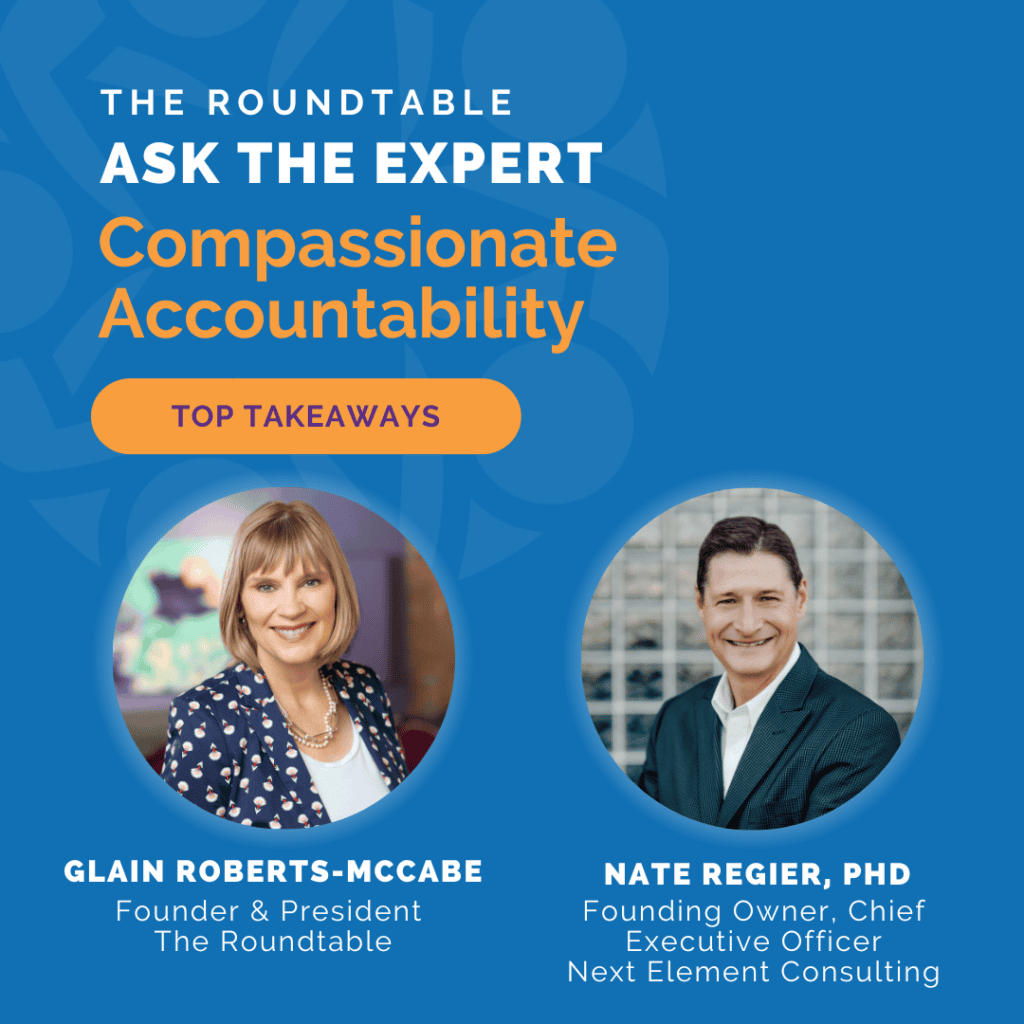Top 3 Takeaways from Compassionate Accountability: What makes great leaders stand out
Last week, I had the great opportunity to speak with my friend and colleague Dr. Nate Regier about his latest book Compassionate Accountability. As we see leaders in organizations trying to find their way through new ways of working, mandates are becoming more common place and compassion seems to be taking a back seat. In this talk, Nate and I discuss the idea that compassion and accountability don’t need to be at odds with each other. Instead, when leaders can integrate both successfully, great things happen.
Here are my top 3 personal takeaways from my conversation with Nate. Watch the full recording here.
- There are multiple onramps to compassion. If you’ve been around the leadership block long enough, you’ve done enough personality assessments to know whether you tend to lean more towards the people side of the equation or the task side of the equation. If you’re someone who focuses primarily on task, you may feel stymied about how to bring empathy into your practice in a way that feels authentic. The good news is that you don’t necessarily have to care deeply about another person to bring a more compassionate approach to your leadership. There are multiple onramps to compassion. A simple example: I see you struggling with inefficiencies in writing reports. As a leader, I say: “I’d like to help teach you some ways to be more efficient by showing you some shortcuts on your keyboard. You’ll get more done and not be so stressed at the end of the day.” In this scenario, it’s not empathy that’s driving my actions, it’s because I care about efficiency, and I want to help you be more efficient. Tap into other drivers to get to compassion.
- Turn on your VCR. Nate introduced the “VCR” (Valuable, Capable, Responsible) model, which operate as three switches that, when each is turned on, leaders show up with the beliefs that everyone is innately valuable; everyone can contribute; and, that everyone is responsible for their own feelings, beliefs and actions. When one switch is ‘off’, we struggle. Nate stressed that the first lever (Values) is the most critical one because if you don’t believe people are innately valuable and instead think of people as conditionally valuable, you won’t be able to turn on the other two switches of Capability and Responsibility. Therefore, the journey to being a leader who can integrate compassion and accountability start with a keen awareness of self.
- Conflict + Compassion = Creation. If you want to innovate, you need diversity of thought. And if you have diversity of thought, you’re probably going to encounter conflict. Conflict can be used in two ways: to create drama or simply to create. Nate shared that when we walk into conflict with our ‘VCR turned on’ we become creators and side-step the drama. Of course, we all view conflict through our own beliefs and biases and Nate shared the importance of co-creating psychologically safe spaces where all voices can be heard and compassionate conflict can thrive.
This was a terrific, wide-ranging conversation and I encourage you to jump into the replay to get all the tips. You’ll also hear Nate answer some terrific questions from our audience members on how to navigate real-world challenges. Grab a copy of Nate’s book here and dive deeper into the topics we discussed. And, check out Nate’s blog here and his podcast here.
Join us next month for our rescheduled conversation with Canada’s leading coaching expert, Michael Bungay Stanier as we explore his latest book ‘How to Work with (Almost) Anyone’. You don’t want to miss this one!




